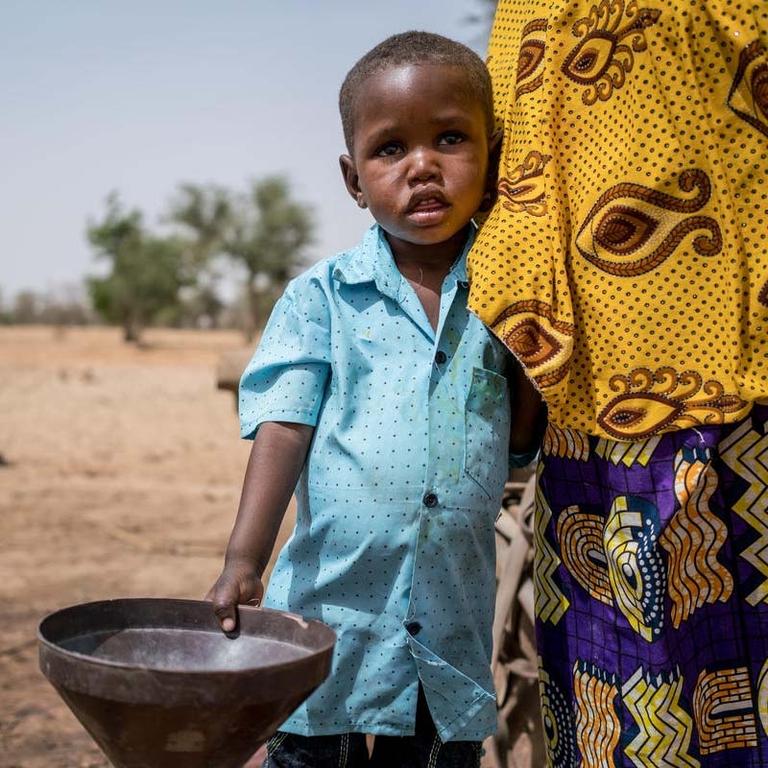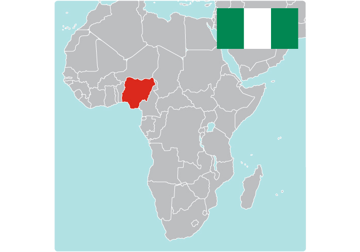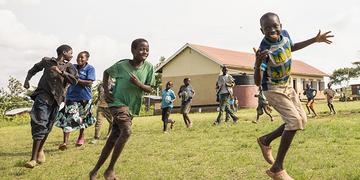Help Children in Nigeria
In Nigeria, more than 6 million children under five were already predicted to suffer from malnutrition across the Sahel this year. Now with flooding damaging crops and other food sources, hunger levels in Nigeria are likely to worsen. Beyond these challenges, a recent cholera outbreak is further imperiling the lives of Nigeria’s children. The situation is growing worse by the day – if we don’t act now, many more children risk losing their lives.
��ɫ��Ƶhas been working in Nigeria since 2001 to ensure all children survive, learn and are protected. In response to the ongoing hunger crisis, we're providing monthly cash transfers to help families buy food and meet their other basic needs.���±�’r�� also working around the clock to respond to the growing needs of children with acute malnutrition.���±�’r�� responding to the cholera outbreak by deploying the Emergency Health Unit to train up health workers.
��ɫ��Ƶis a global leader working in the U.S. and around the world to help children and their communities prevent, prepare for and recover from climate-induced disasters. Your donation today supports this life-saving work. Make a one-time donation to the Children's Emergency Fund or join Team Tomorrow to connect with the causes you care about - like - through your monthly donation.
Deadly Flooding in Nigeria: 5 Things to Know
Families are overwhelmed by the severe flooding. Many of them have never seen such devastation from the rain before and have been forced to leave have to change their habits and their environment and adapt to new living conditions.
1. Recent deadly floods have killed over 600 people in Nigeria and displaced 1 million more. The floods have led to a major increase in cholera cases.
2. Floods in the Sahel region are becoming more frequent and widespread. Since early July, intense rainfall has affected communities along the Niger-Nigeria border, triggering flooding which has damaged homes, displaced families and impacted food sources and livelihoods.
3. In Yobe state, Nigeria, an estimated 1.6 million people – nearly 40% of the population – don't know where their next meal will come from.
4. Cholera is creating an added danger for children, with cases of the waterborne disease spiking, with the majority of suspected cases affecting children under five years old.
5. In response to the flooding, ��ɫ��Ƶis carrying out water trucking, repairing water points, distributing WASH kits and providing psychosocial support to children most at risk.

Rabiou was suffering from malnutrition when his mother sought treatment at a health clinic. ��ɫ��Ƶworks with local partners to screen and treat acute malnutrition in communities throughout Nigeria.
The Challenges for Children in Nigeria
Suffering conflict, disease and lack of access to food and clean water, Nigerian children need your help.*
50% of girls 15 and older are literate
32% of school-age children are out of school
104 out of 1000 children die
before their 5th birthday
51% of children are engaged in child labor
70% of people live in poverty

Our Work for Children in Nigeria
��ɫ��Ƶin Nigeria is distributing food to vulnerable families, reaching nearly 16,500 people. Our teams have established therapeutic feeding centers and outreach centers that provide food for infants and young children suffering from malnutrition.
We also run a stabilization center for severely malnourished children with complications. ��ɫ��Ƶis also working to strengthen health systems and support maternal and child health in four northern states.
Protected 296,132 children from harm
Supported 186,315 children in times of crisis
Provided 5,471,422 children with a healthy start in life
Gave 5,266,326 children vital nourishment
Supported 296,394 parents to provide for their children’s basic needs
How to Help Children in Nigeria
Support Save the Children’s mission. Donate to help children in Nigeria, and around the world, survive and thrive.
Join Team Tomorrow
Join Team Tomorrow and your monthly donation will go toward addressing the needs of children affected by today’s most urgent issues.
Sources: * Unless otherwise noted, facts and statistics have been sourced from Save the Children’s monitoring and evaluation experts and from the 2019 Global Childhood Report. You can access detailed data here. Other sources as follows: Population: ; The World Bank, 2016; Unesco Institute for Statistics (UIS)



